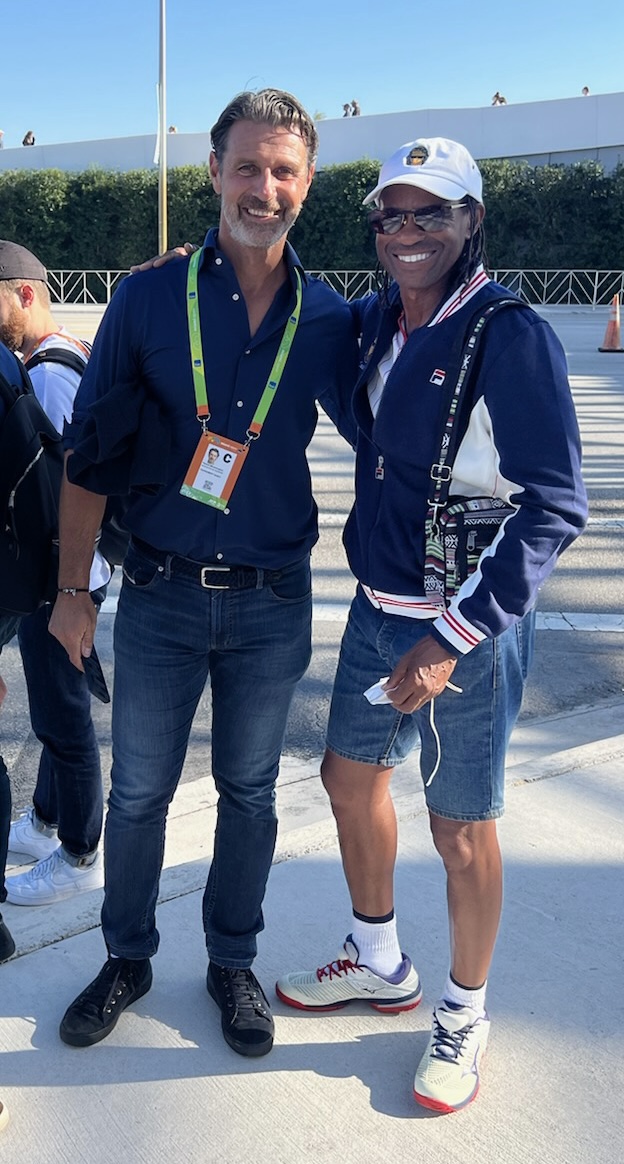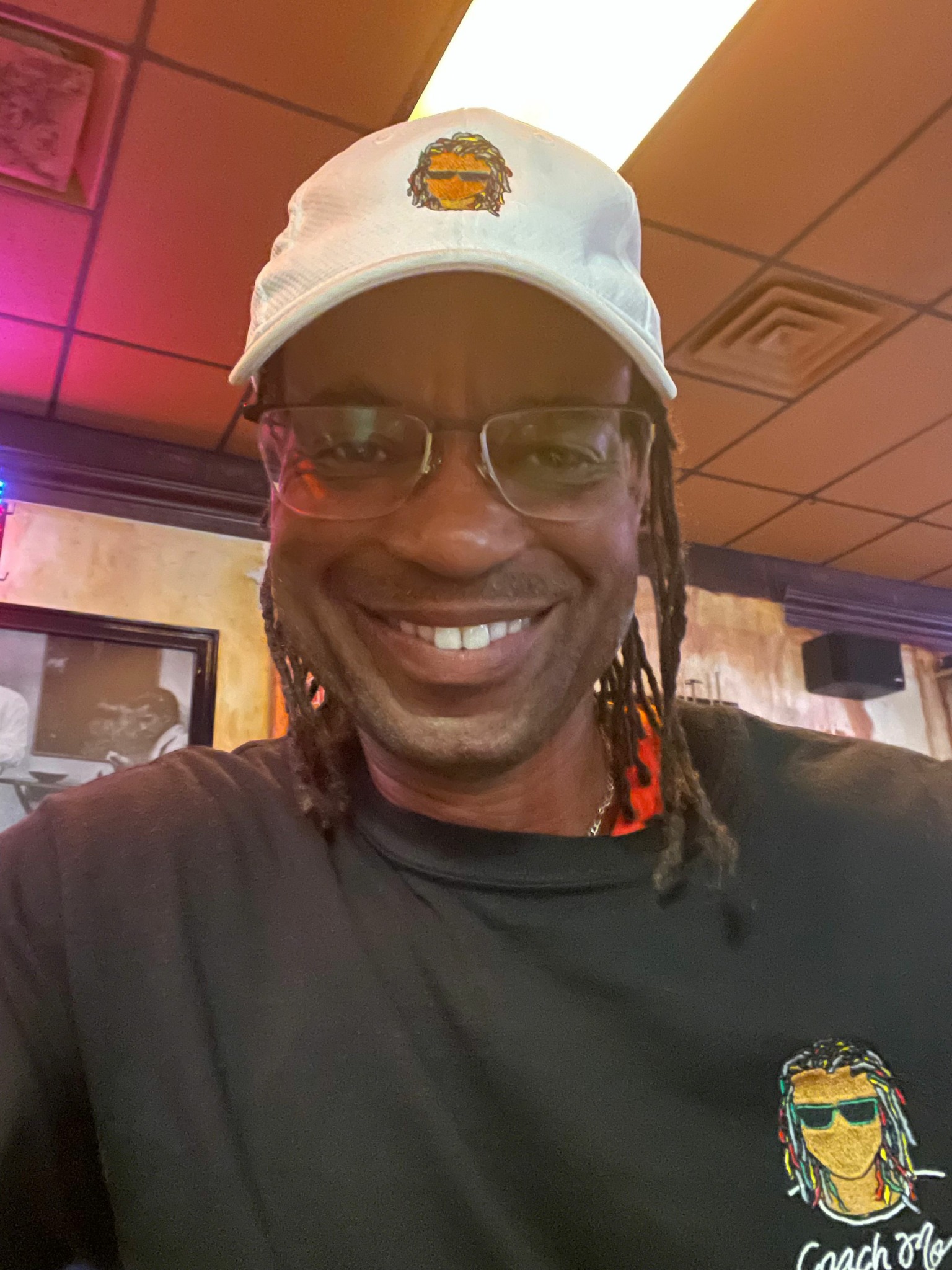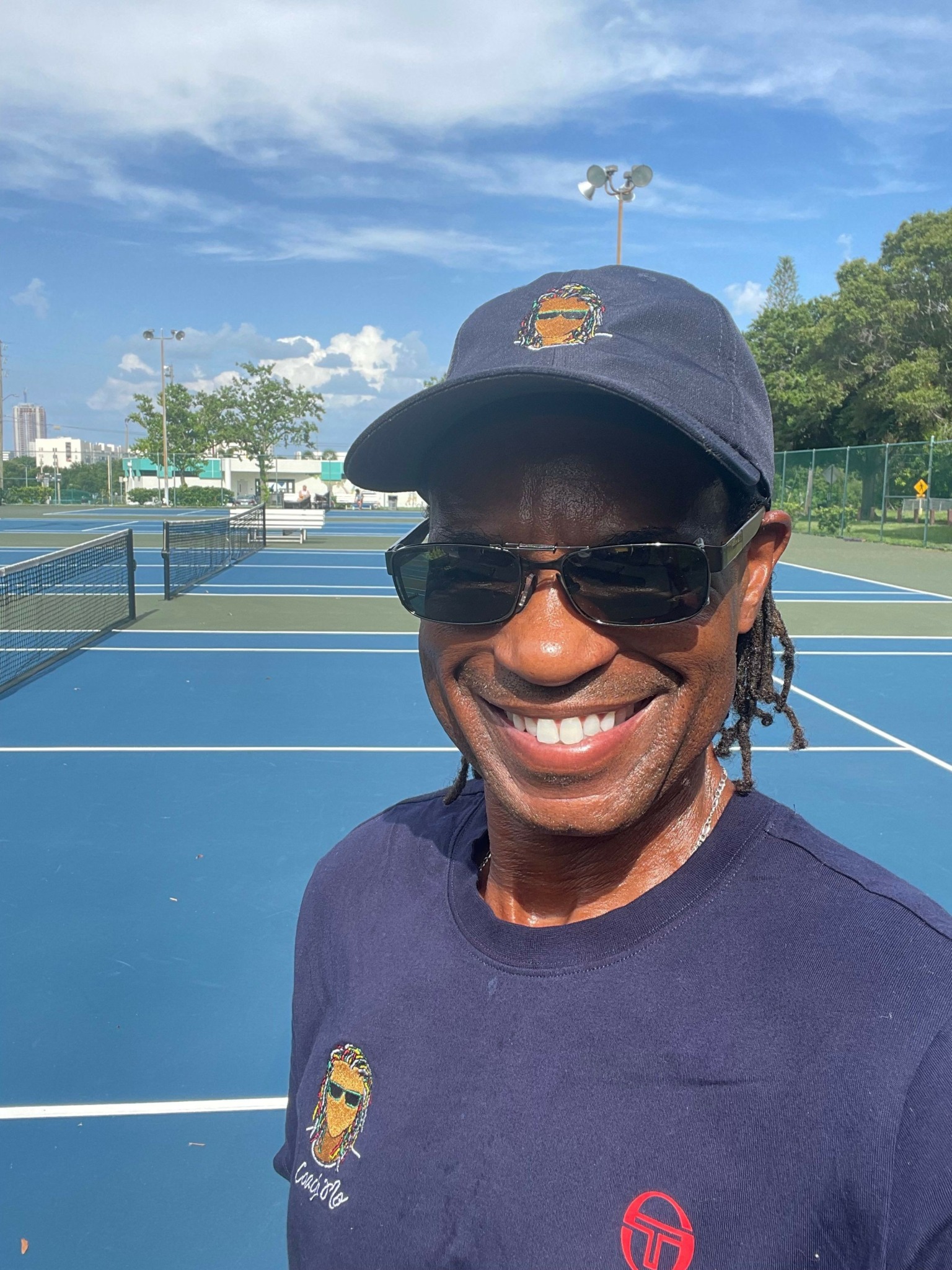We were lucky to catch up with Motez Robinson Jr recently and have shared our conversation below.
Motez, looking forward to hearing all of your stories today. One of the things we most admire about small businesses is their ability to diverge from the corporate/industry standard. Is there something that you or your brand do that differs from the industry standard? We’d love to hear about it as well as any stories you might have that illustrate how or why this difference matters.
Yes, we serve adult beginner tennis players who have been hesitant about going to a tennis club or resort to learn how to play for fear of being judged or feeling out of place. We meet them where they feel comfortable: on the public tennis courts near their homes—which is where I learned to play this wonderful game. We encourage an atmosphere of cooperation and camaraderie. Moreover, during our on-court lessons, we used the Orange Dot decompressed tennis balls that are used for 10 and under children. The decompressed tennis ball is a modified tennis that contains only 50 percent of the air of the standard yellow/green tennis ball. This results in a lower bouncing ball with less speed which gives the adult a greater sense of control of the ball and better stroke development. Most, if not all, other beginner tennis programs use the standard tennis balls, which bounces higher and faster, leading to more frustration for the student.

Motez, love having you share your insights with us. Before we ask you more questions, maybe you can take a moment to introduce yourself to our readers who might have missed our earlier conversations?
I am an Air Force veteran and former NAIA collegiate player who grew up in Panama City, Florida. I got into tennis during junior high school and started teaching tennis full time in 2004 when I moved to St. Petersburg, Florida and the joined the staff at the St. Petersburg Tennis Center where I taught for 15 years before founding my nonprofit tennis organization, Mo Tennis Coaching, during the covid pandemic.
I founded Mo Tennis Coaching because I have experienced the powerful benefits of tennis in my own life and in the lives of other BIPOC (black, indigenous, people of color who may not have had the opportunity to learn and play due to economic and social barriers). As an innovative coach and instructor, I have helped my students develop a true love for tennis, a thirst to learn more, a longevity mindset for the game, and perhaps most important, a sense of fun on the court. We want to be the gateway into tennis for all adult beginners.
As the pandemic has made painfully clear, BIPOC do not enjoy equitable health access or optimal heath. Even before the pandemic, the Centers for Disease Control and Prevention found that younger African Americans are living with or dying of many conditions typically found in white Americans at older ages. African Americans ages 18 to 49 are two times as likely to die from heart disease, and African Americans ages 35-64 years are 50% more likely to have high blood pressure. These health differences are often due to economic and social conditions that are more common among BIPOC than whites. Many BIPOC have not had the opportunity to learn and play tennis due to income status and/or disadvantaged backgrounds. Making tennis available to BIPOC is a key way to help improve their health and address health issues that affect BIPOC, including diabetes, heart disease, and other chronic illnesses.
Additionally, I have published my first tennis book, “21 Century Tennis”, after penning many freelance tennis articles over several years, and I participated in the 2015 U.S.T.A adult 40 and over (4.5+) league national championships. You can learn more about me and our tennis organization at http://motenniscoaching.org.

Can you share a story from your journey that illustrates your resilience?
As I teach to my tennis students… resilience is both a virtue and a characteristic that involves the ability to adapt to difficult situations and bounce back from adversity, and it also a process of developing behaviors, thoughts, and actions that help them navigate challenging experiences. Tennis teaches this desirable quality to every players who competes at any level.
My most memorable story of resilience involves a time when I had just come out of two failed back-to-back relationships; my self worth and confidence was at its lowest as my clientele was dwindling and my director of tennis admonished me by relieving me of duties in the after-school tennis program for the kids; and, I questioned my passion and purpose to teach tennis.
With time on my hands, I sought a different direction by accepting a teaching job at a small private school. The experience of teaching school taught me something I had neglected for many years: that I am a leader and I am capable of teaching and helping others. My confidence and self-worth soared, and soon I was offered the job of head tennis coach of the varsity tennis team at Shorecrest Preparatory School. Another opportunity to lead, to show my creativity as a tennis coach, and teach life lessons.
This was the spark that lit the fuse of enthusiasm to become my own tennis boss. Other aspects of my life began to fall into place and when the pandemic hit, I was prepared and ready to strike out on my own and stand out from my colleagues. I left my secure position of 15 years and I have not looked back. Now my new venture involves helping others tennis instructors and coaches who want to become independent tennis business owners…Tennis-prenuers as I call them.

What’s a lesson you had to unlearn and what’s the backstory?
The lesson I had to unlearn was just blending in and trying to stand out.
I am in 3rd grade, and we have received our class picture for the year, and the teacher calls me up to desk in front of the rest the class.
She asks, “Do you know why I called you up here?” “No Mame” I answered. “Look at this,” she insists as she pulls the class picture out of its paper covering. “You see this? You ruined the class picture. Do you know why?” “Yes, because I did a pose with my hands,” I quickly answered. “Yes, that’s right. Why would you do that?” “I don’t know, maybe because I like football.”
I did love football, and I did make a goofy motion with my hands as though I was receiving the ball from the center.
And I was wearing my favorite football jersey at the time, number 12 for Joe Namath, so I was reacting in the moment. After a few more moments, she says to me, “Motez, just blend in, don’t try to stand out. Just do what everyone else is told to do!”
Wow!!!
Classmates said that I ruined the class picture, so they were going to cut me out of the picture, or they were not going to buy the class photo because of me because their parents would hate it. So, I was disliked by not only my teacher but my entire class, and that I had to now stay in line with what everyone else was doing, just fit in, and not be myself, don’t express any individuality.
The new lesson: Be authentic, don’t copy someone else’s style; trust and embrace your TRUE calling and purpose; and don’t let anyone tell you to just blend in like everyone else. My logo is a manifestation of and stands as a symbol and reminder to me regarding this revelation. Following this revelation, other things started to manifest: I authored my first tennis book and wrote numerous freelance tennis articles; I bought my first home (a long time dream); I left the tennis foundation and became an independent contractor (Tennis-prenuer), and my off court friendships became many and fruitful again. I am a TEACHER and a LEADER called to TEACH and LEAD.
Contact Info:
- Website: http://motenniscoaching.org
- Instagram: https://www.instagram.com/motenniscoaching/?next=%2F
- Facebook: https://www.facebook.com/motenniscoaching
- Linkedin: https://www.linkedin.com/in/motenniscoaching-ab3b541a?utm_source=share&utm_campaign=share_via&utm_content=profile&utm_medium=ios_app



Image Credits
Dirk Shadd, Tampa Bay Times (1 photo)


